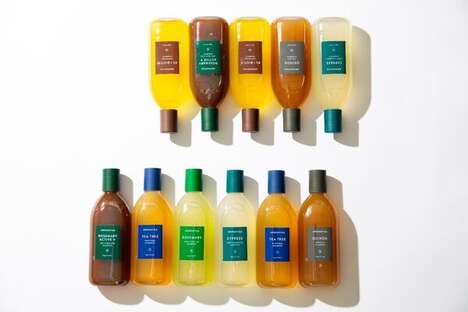Extreme Scenario Planning
An Interview with Lawren Barnett, Global Futures Director Coca-Cola Company
play_circle

Using and Understanding Megatrends:
Lawren: Long term, the best way to go about these is to start to scenario out the directions in which these could go. Pick a time horizon, whichever one is best for your innovation strain, and then start to scenario out extremes -- the biggest growth decline, major divergence. You can actually look at Trend Hunter for how to do some of those things in terms of how change manifests, and then start to figure out what are the different ways in which we could prepare for some of these more extreme manifestations of these trends? What sort of pieces can we get in place or how can we start to identify that we have major gaps? For instance, do we need to go partner with someone who knows how to do this better? Do we need to acquire a small brand that maybe is already doing this at the fringes and either partner with them, learn from them, acquire them? However you may go about doing that.
Those are some of the tactical ways at a very long term angle that you can start to leverage some of these these trends. From a short term angle, it's really about how can you pivot some of the plans that you have now by just asking the simple questions like are we prepared for how natural some people might want this product to be? How can we make this product more natural? How can we make this experience more natural? How can we make this experience more multisensorial? What other pieces can we bring into this taste experience? For instance, is there a color or is there a visual way that we can bring in some different signals of what this sense is intended to give us?
Do we really understand what the experience people are taking away from this? Maybe you just need to do a quick call or a quick social listening session with some some folks to make sure you really understand what the experience is that your product is giving them or what the experience is that your service is providing.
Those are some of the more short term ways which are really just about asking the question and seeing if there are other means with which you can leverage these trends that you may not have been doing thus far because you're focused on one target group or a few different trends within what you're scoping within your innovation strain.
Multisensation:
Lawren: The human experiences is really the only thing that we have, and in terms of reality, it is our perception of reality. We have generally about five senses to experience that with, and how can people not only get a more varied experience -- especially as we think about all of the different filters that we have on our lives that keep us from having that full sensorial experience, the feeling that really makes you feel alive.
People are going to have a lot more of an emphasis on what that means, especially as they continue to live in a more phygital -- a digital physical -- world. What are the ways in which you can truly feel like you are a human alive right now? And then not only are those sorts of experiences in the very physical world but also how can you use augmented reality to help to elevate those experiences as well? Are there elements that you can bring in that feel like they might be a little bit more safe, but help to elevate the experience overall so that you allow it in terms of your sanctuary of your experience?
Naturality:
Lawren: I think that one's going to be really important because it's going to be a really pressing existential crisis. It's going to be more and more prevalent in people's daily lives. They're going to start to see in their neighborhoods, with people they know, within their country, and more impacts of climate change. And as that really becomes personal for people, this necessity to go back to what's natural, and ensure that they're not taking more than they give will become more prevalent.
Also, as fear causes the need to sort of go back into what is known, what is safe, and hold back from nature in order to feel a sense of safety and security -- there's a reason we call her mother nature. Naturality really is about how do I also internalize centrality not just externalize it. So what are the ways in which I can ensure that my experience is more natural, that I am ensuring that my bodily experience is natural, and it's a very sort of personal reaction.
I think in food and beverage, you're seeing a lot of response around this health and wellness movement and that there's a real holistic health. That goes back to naturality and the emphasis on mental health. There has been this recent focus on mental health from all angles, meditation, and quiet, and stillness which is very natural. So there's lots of different angles about what naturality can mean. And I think that you have to look at it on a continuum of externalization of that naturality as well as the internalization of that naturality and not just about what sort of ingredients and healthy things you're ingesting. You also have to consider what you're allowing into your mental and emotional space as well.
References: coca-colacompany
Featured Articles

In-Store Refill
In-store refill stations for personal care brands are becoming more popular

AR Package
Brands incorporate augmented reality-based gaming into product packaging

Social Collabs
TikTok is collaborating with other business in the creative industry

Mindful Entrepreneurship
Brands release programs that help users learn about and build businesses